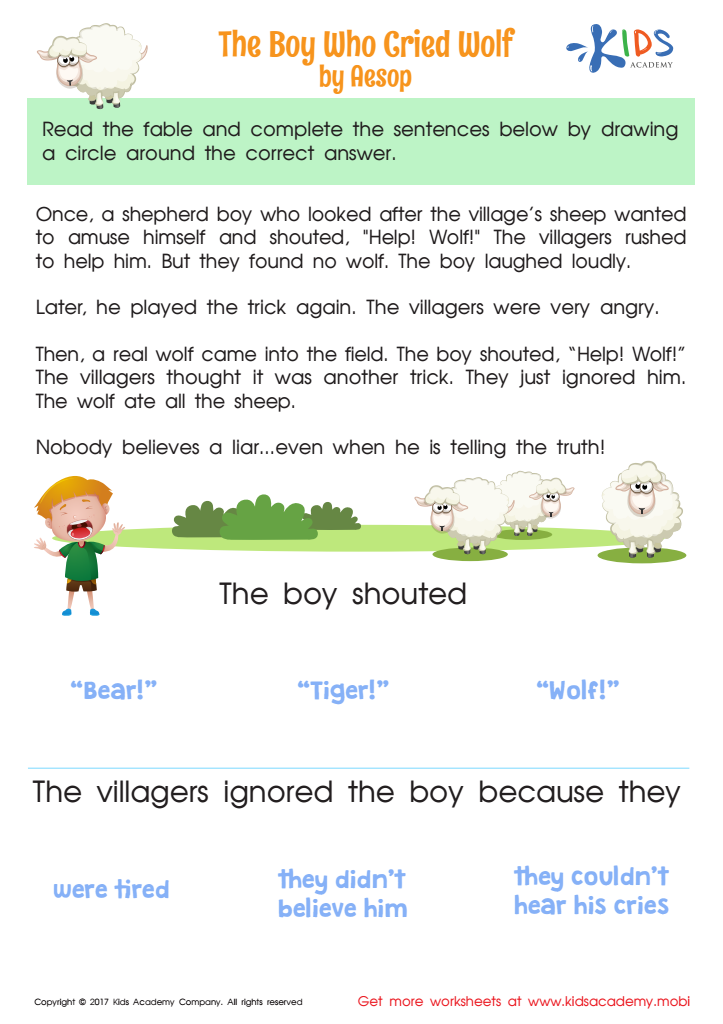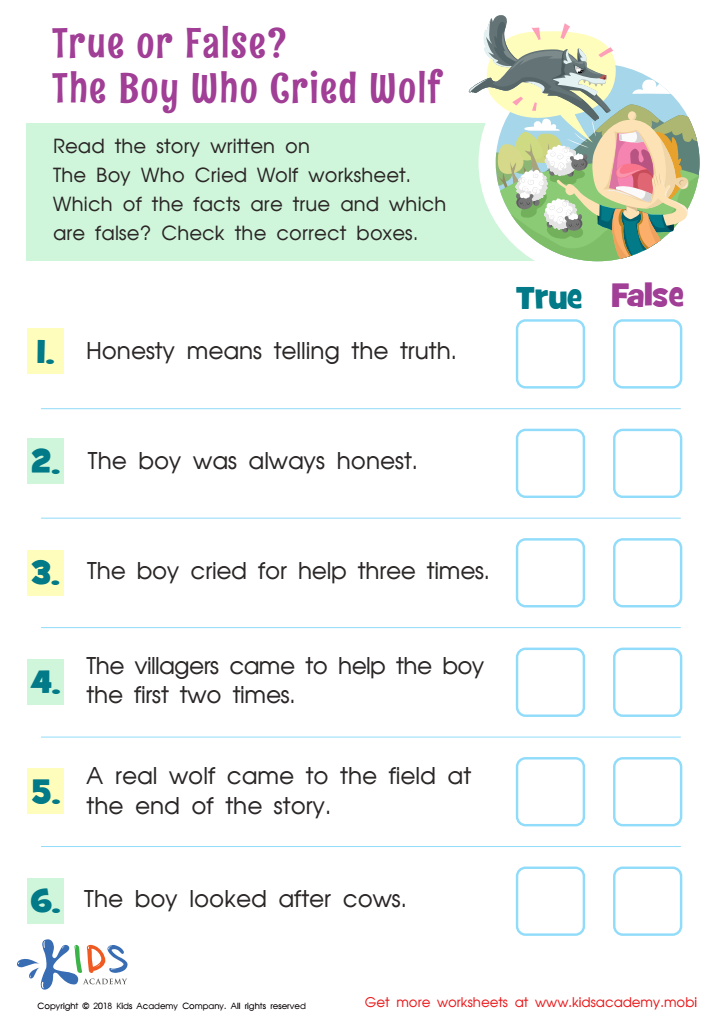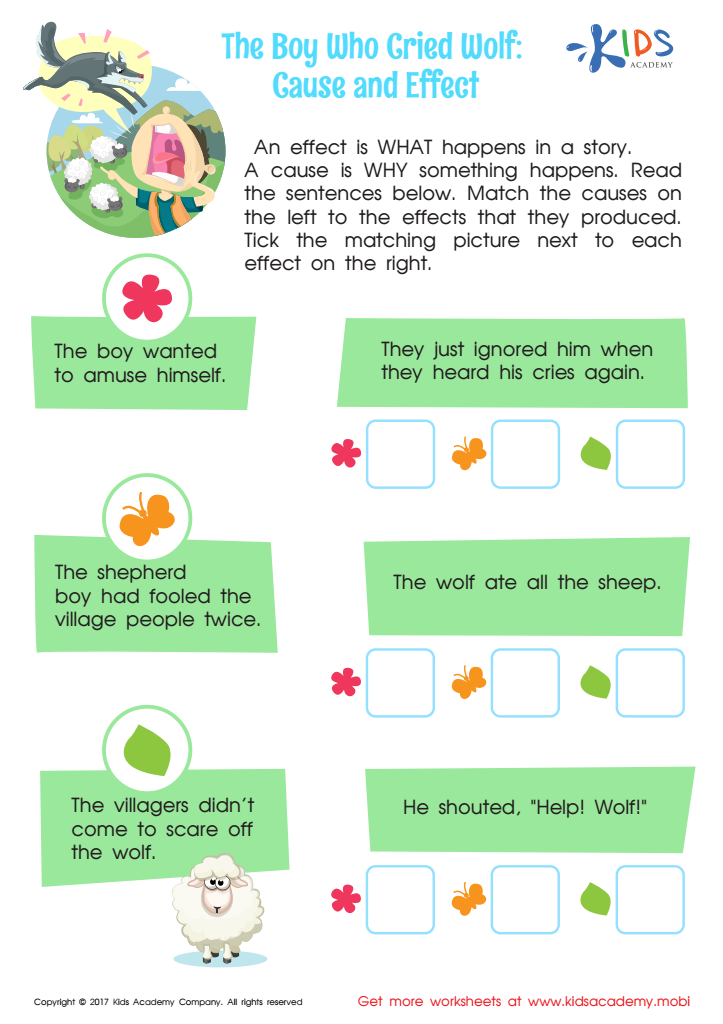Messages and Lessons in a Text - Lesson for Grade 1, Chapter - Key Ideas and Details/ Craft and Structure
In the "Messages and Lessons in a Text" lesson, designed for Grade 1 students, young learners will embark on a captivating exploration within the Reading Literature unit, focusing on "Key Ideas and Details" and "Craft and Structure. " This lesson aims to introduce students to the fundamental concept that stories, beyond their entertaining value, carry important messages and lessons intended to guide our behavior and thinking.
By engaging with the classic fable "The Boy Who Cried Wolf" through a series of interactive worksheets, students will learn to identify the key message of honesty and the consequences of lying. The "True or False? " worksheet will enhance their comprehension skills, ensuring they understand the story's events accurately. Furthermore, the "Cause and Effect" worksheet will encourage critical thinking, helping students to connect actions within the story to their outcomes, illustrating how the boy's repeated lies lead to a lack of trust from his community.
Understanding the underlying messages and lessons in texts is crucial for young readers, as it not only improves their analytical skills but also instills moral values that are essential for their personal development and interaction with the world around them.

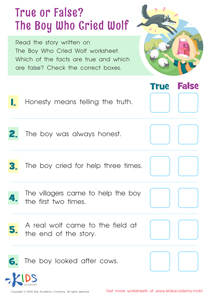
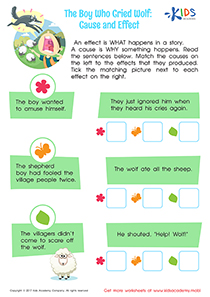
-
Activity 1 / The Boy Who Cried Wolf Worksheet
Test your child’s reading comprehension with this worksheet: The Boy Who Cried Wolf.
Read the fable with your child, and using the comprehension questions on the page, put your child to the test! Using the text on the worksheet, teach your child how to check answers for correctness. -
Activity 2 / True or False? The Boy Who Cried Wolf Worksheet
After reading The Boy Who Cried Wolf, test your students understating of the events in the story. When completing the worksheet, students read statements about the story and then decide if the statement is true or false. Completing the worksheet easily checks the student’s ability to recall facts from the story. Check your students’ reading comprehension with this free downloadable.
-
Activity 3 / The Boy Who Cried Wolf: Cause and Effect Worksheet
Using common childhood stories and fables, learning reading comprehension is a breeze! Here’s a worksheet to help your child learn a vital reading skill.
This worksheet, The Boy Who Cried Wolf: Cause and Effect, will teach your child to look for cause and effect story elements!
